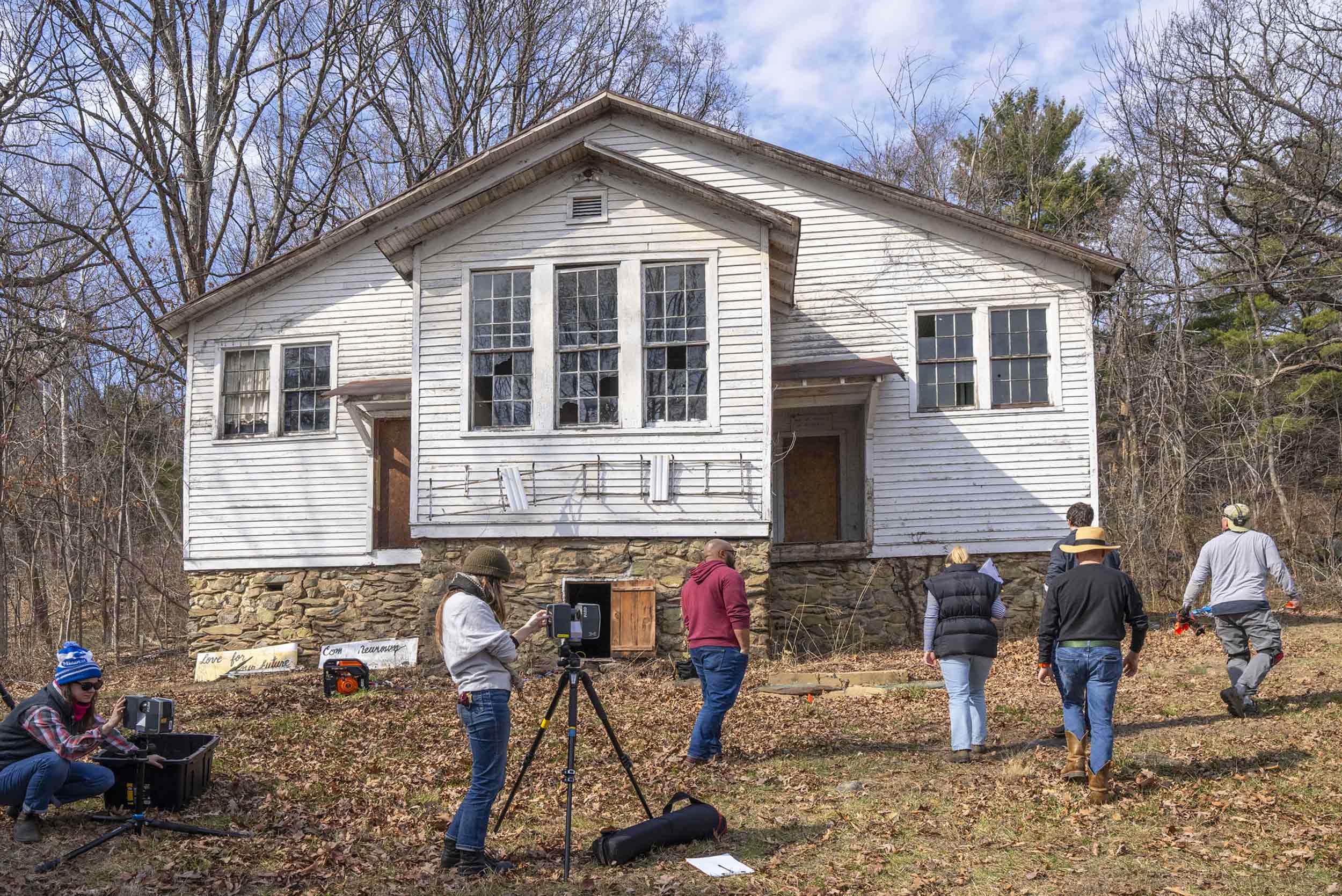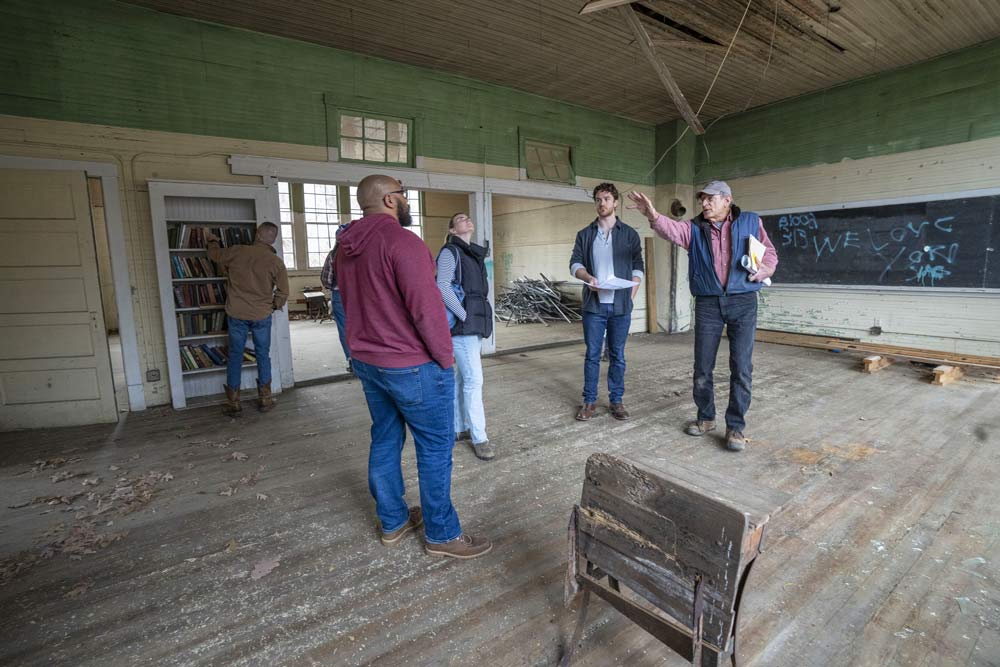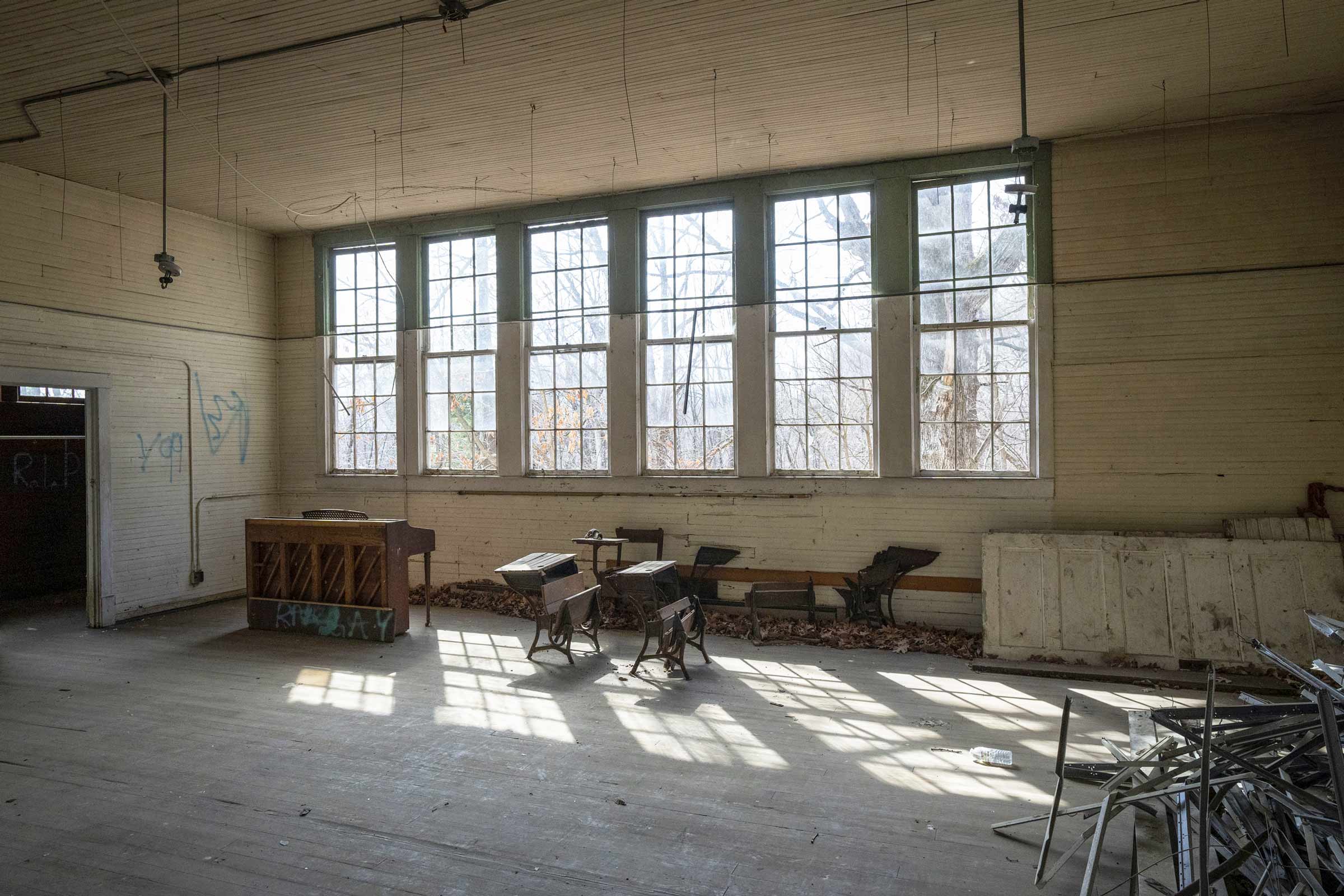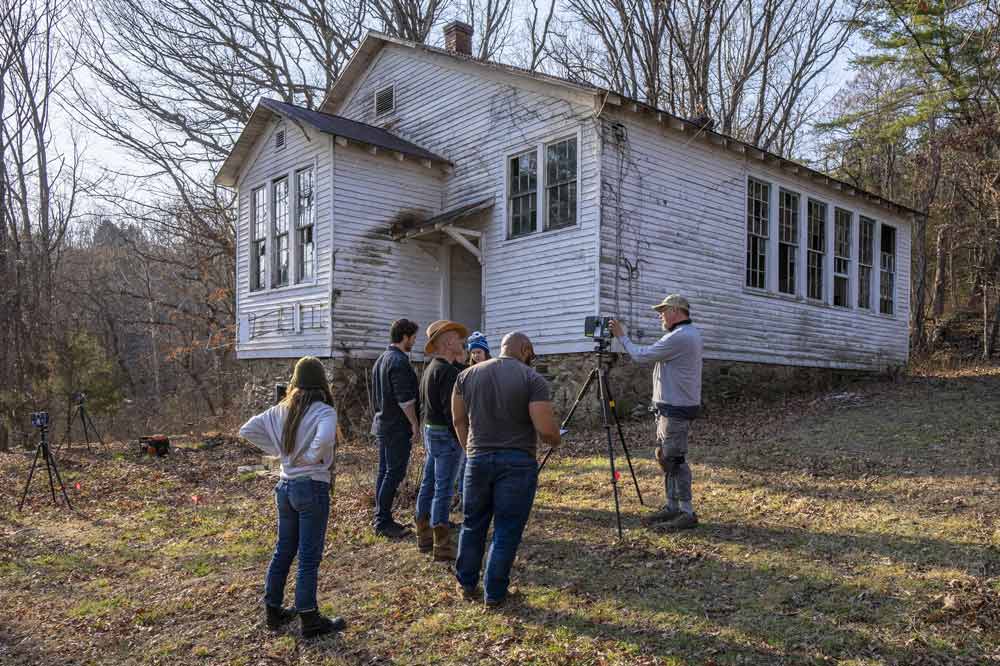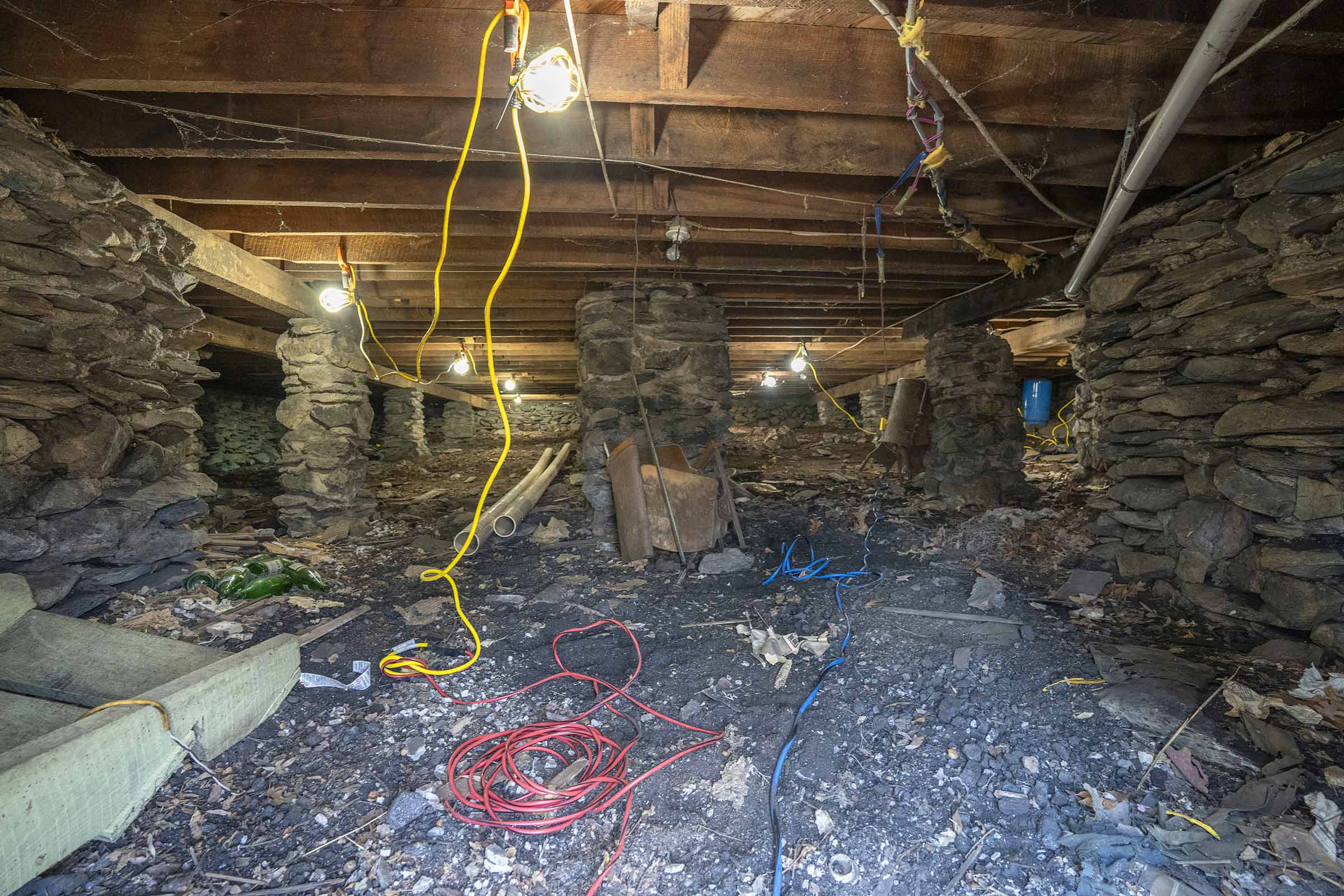“I have inspected between 20 to 30 Rosenwald and non-Rosenwald schools in Central Virginia, and I have not seen a Rosenwald with as much historic integrity as this one has,” Lahendro said. “It still has bookshelves that were part of the original building. It was built exactly like the prototype plan put out by the Rosenwald program for a two-teacher, north/south school. The high level of craftsmanship demonstrates the pride that community builders had for this school.”
For Lahendro, donating his time and talent to preserving a neglected part of history is a labor of love. It is similar for Rourk, who uses these opportunities to impress lessons upon the phalanx of graduate students working with him.
Rourk’s course, taught through Andy Johnston’s Historic Preservation program in the School of Architecture and in collaboration with the UVA Library, provides the students with practical experience.
“Jody has really been helpful in connecting the Historic Preservation program in Architectural History with real-life preservation,” Rourk said. “Students are contributing to ‘real’ work.”
Grace Guirl of St. Louis, studying for a master’s degree in architectural history, is fascinated by Rourk’s data-gathering techniques in the field and what they reveal about buildings.
“I want to learn how buildings are constructed and how they evolved,” Guirl said.
Dustin Thomas, a PhD candidate in ancient Mediterranean art and archaeology, enjoys the field work and familiarizing himself with local culture. He hopes one day to apply Rourk’s laser-scanning techniques to ancient sites.
While students selected the optimum spots to set up scanners around the school, Rourk worked by himself on the foundation, a feature that helped the building survive as long as it has.
“This is a unique building as far as the Rosenwald Schools that I’ve experienced.” Rourk said. “Most of these schools were built on piers to allow air flow underneath, as an integral part of the design for healthy learning environments that was essential to Rosenwald Schools. The builders couldn’t really do that in this case because of the extreme topography upon which the building was sited. The hillside demands a more structural foundation to anchor the building to the ground.”
